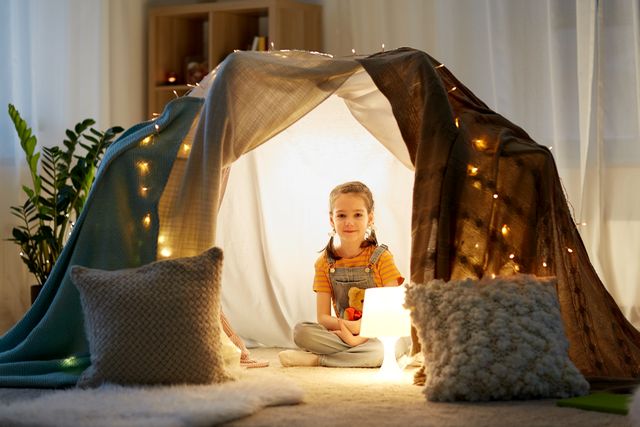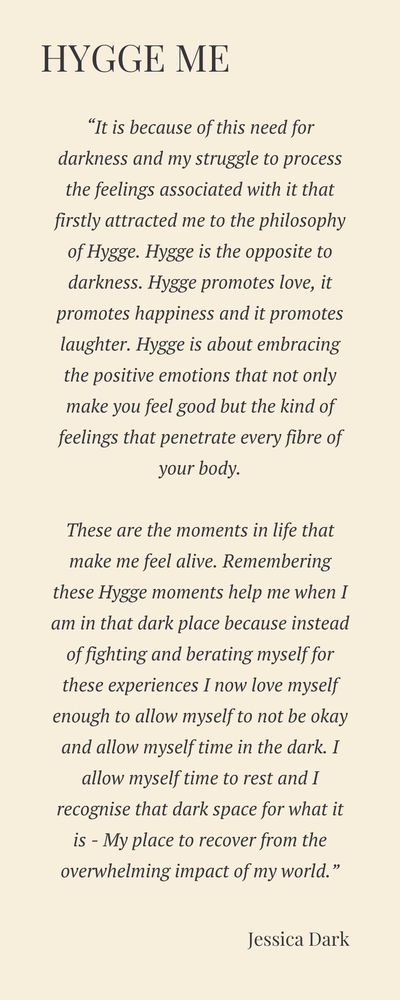Sensory Processing
Hygge: This Danish Concept of Living Inspires a Calming Effect for Sensory Overload in Children
Hygge: How This Danish Concept of Living Inspires a Calming Effect for Sensory Overload in Children…

It’s amazing to me how my world just continues to expand every year – yes, even at my age, dare I say it. I enjoy traveling with my work and my family. We go from South Africa to Australia quite regularly.
And with our wonderful digital business, CoordiKids can take us into the homes and offices of even more parts of the world. We speak with colleagues every day in Ireland and the US. We talk to families all over the world, and it’s just amazing to me.
I have seen just how many common threads there are entwined among family customs around the world. After all, family life really is at the heart of my passion. Family life is at the heart of everything, really, isn’t it?
Discovering new delights
And it’s so beautiful to learn new things, too. I especially love learning how we call various components of our home life and family culture.
And so, on one of my recent travels, I was reading an article in Womankind magazine about the Danish concept called hygge.
I’ve seen the word pop up here and there – especially on Pinterest! My goodness, if Pinterest hasn’t just become completely overrun with Scandinavian culture in general, in fact! There are beautiful images of “Scandinavian-inspired minimalist designs for the home and office”.
In addition, there tips for bringing the Scandinavian idea of hygge into your daily routine. Some ways this is done is with meditation, candlelit dinners, and cosy reading nooks.
The word, hygge, in general, I found out, has become so popular in the past few years that it was even on the list of the Oxford Dictionary’s Words of the Year.
Inclusion in this list is a credit given to a few foreign or invented words that creep into the English language every year that make such a strong impression in our everyday vocabulary that they cannot be ignored. How funny this strange word could have become so popular right underneath my nose.
The meaning of hygge
So, according to The Oxford Dictionaries, ‘hygge’ is pronounced hue-guh. And it refers to ‘a quality of cosiness and comfortable conviviality that engenders a feeling of contentment or well-being’.
It’s more than just the English word for “cosy.” It refers to being consciously cosy. It’s the art of creating a comfortable atmosphere. The pursuit of everyday indulgence and internal joy.
If hygge were a physical object, I think it would take the form of a warm, steaming, spiced cake. A cake that had been baked with the following ingredients and enjoyed with a cup of hot cocoa by a warm fire under a fuzzy blanket:
- Relaxation
- Indulgence
- Good food
- Gratitude
- Equality
- Being with family and people you love
It’s inherently Danish. They say that hygge is part of their DNA, part of their culture.
How hygge relates to sensory overload in children
What has struck me as particularly inspiring for my work with sensory overload in children is the following description. The description is given by Alex on a site called Hygge House:
“It literally only requires consciousness, a certain slowness, and the ability to not just be present – but recognize and enjoy the present. Another definition of hygge is “an art of creating intimacy” (either with yourself, friends and your home). Security, familiarity, comfort, reassurance, kinship, and simpleness – all contribute to the sensation of hygge. By creating simple rituals without effort {such as brewing real tea with a little china cup every evening to stopping at the flower shop every week} the Danes see both the domestic and personal life as an art form and not every drudgery to get away from. They incorporate hygge into their daily life, so it becomes a natural extension rather than a forced and stressful event.”
So many of the tips offered will be embraced by those interested incorporating a bit of hygge into our household. Because they sound as if they would provide a wonderful escape from the sensory overload in children of today. Consider these tips:
- Low lighting,
- candlelit dinners,
- soft ambient music,
- screen-free dinnertimes with family,
- quiet reading nooks,
- enjoying a game of cards under a make-shift tent in the living room.
What’s more, the idea of having these little intimate moments as a routine part of family life strikes a chord. These ideas tie in with our conviction that routines can have positive affects on managing the symptoms of ADHD.
(See: The ADHD Routine: How Daily Routine for Kids with ADHD can be Beneficial and Try a Great Daily Routine for Kids: 5 Easy-Peasy ADHD Routines to Try)
How a hygge home can positively support sensory overload in children
I decided to do a bit of poking around. I wanted to see if there has been any other discussion of hygge households. Particularly hygge households offering a welcome influence for sensory overload in children. I always like to include scientific or statistical reviews when I’m musing about correlations like these.
But in this case, nothing has been published yet that satisfies my curiosity. So, I continue to explore for evidence about whether a hygge home can positively support sensory overload in children.
Living Life on Her Own Terms
What I did find, however, is Jessica Dark and her lovely blog Hygge Me. I’d love to introduce you all to Jessica, a woman who, according to her own description, struggles with ADHD and sensory challenges.
She says that her sensory challenges often leave her seeking refuge in darkness and being alone. However, by most cultural standards, being alone in the dark draws an eye of concern from worried friends and family.
After all, isn’t the true sign of happiness the look on a person’s face when they’re laughing in public with a group of friends in a bright cheery room full of noisy party banter?
Not necessarily, according to the world of hygge. And that’s what Jessica appreciates about this cultural norm. And it’s also why she created a world online to sing the praises of hygge for other sensory sensitive souls.

So, now I offer a beautiful blend of tips from Jessica’s blog with those I give the parents at CoordiKids. These tips will assist in creating a sensory space to provide relief from sensory overload in children. You’ll find the ideas parallel that of hygge!
Create A Hygge Nook for Relief From Sensory Overload in Children
There’s a reason these play tents are so popular in Scandinavian home décor – they offer a perfect nook.
Quiet
Use sound machines for steady white noise, or include a pair of sound-cancelling headphones.
Low light and no visual distractions
Jessica says, “Lighting is so incredibly important…too much and it can cause headaches, too little and you can’t see what you are doing.” Fill your nook with twinkle lights or the natural light of candles if you think it’s safe around your children.
Home improvement stores now carry plugs that convert any lamp into a dimmable one, which would be perfect for your hygge nook. Tents, play tunnels, or pod-shaped chairs provide visual barriers from the rest of the home to give your eyes a rest from distraction.
Tactile relief
Use soft pillows and plush, velvet or fleece blankets. A variety of fleece, fur, wool, and knit blankets are popular for creating textured elements in Scandinavian design. Not only do they add warmth in cold months, but a variety of texture is great for tactile stimulation and sensory exploration.
Jessica reminds readers, though, that it’s important to offer areas of both soft and firm. “ To some comfort may be lying on a cold stone floor…to others it may be wrapped in the fluffiest blanket you have ever seen…”
Aromatherapy
Try scratch-n-sniff books, diffusers, rub on oils, or sprays that children can [safely] use to reset their sense of smell.
Oral input
A crunchy snack, sucking juice through a straw, or even chewing tools can offer relief for students who need oral input and pressure. For Jessica, “This could be having contrasts in texture such as rough and smooth, this could be having contrasts in taste either warm and sharp; such as warm water with sliced lemon or direct opposites (my favourite) alternatively warm and cold through providing yourself with a warm drink and a cup of ice.”
Could Incorporating a Hygge Routine Also Provide Relief From Sensory Overload in Children?
As I browse the list of suggestions on Pinterest, in magazines, and on blogs like Jessica’s (Hygge Me) and Alex’s (Hygge House), tips on incorporating hygge into your routine remind me of the same tips we offer parents for routines that may provide relief from sensory overload in children.
Some of the hygge routine tips include:
- Jessica’s suggestion is to wake the family 20 minutes earlier in order to ease into your day using a slow, step-by-step self-care routine.
- Before every meal, spend 30 seconds inhaling the smell of the meal with a smile and make eye contact with everyone else at the table before beginning to eat.
- Make every night a candle-lit dinner night.
- Set aside a time in the day, every day, when all phones, TVs and tablets are set aside and children are given your full attention for at least 30 minutes. Don’t worry about problems or difficulties in these moments. This is about creating a safe space to relax and have some simple fun and intimacy with your family every single day.
- Start bedtime routine inside your hygge nook: put on pajamas, sip a cup of tea or warm milk, read a book with a flashlight, listen to a story on audio while watching twinkling star lights on the ceiling.
Happiest in the world
I dare say there are many reasons why Danish children are ranked as “the happiest in the world” according to social surveys!
Danish parenting expert and author of The Danish Way of Parenting: A Guide to Raising The Happiest Kids in the World, Iben Sandahl says that Danish families make time for ‘hygge’ as part of their standard routine, and that it is not hard to do.
Simply “light a candle, make some hot chocolate, sit down with your children and give them your full attention.”
Shall we give it a try ourselves?